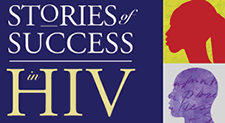World
Health Organization Declares End to H1N1 Swine Flu Pandemic
 |
 |
 |
 |
 |
 |
 |
| SUMMARY:
The
World Health Organization (WHO) announced this week
that 2009 H1N1 influenza A, popularly known as swine
flu, has now entered a post-pandemic period. Although
localized outbreaks are likely to continue, H1N1 is
no longer being widely transmitted worldwide, as it
was last fall and winter. Nevertheless, the agency stressed
that the course of influenza pandemics is unpredictable
and continued vigilance is warranted. |
|
 |
 |
 |
 |
 |
 |
 |
By
Liz Highleyman
The
decision to declare the post-pandemic status was made by an Emergency
Committee based on assessment of the global situation, as well
as reports from several countries currently experiencing influenza
outbreaks. WHO waited until winter in the Southern hemisphere
to determine whether the H1N1 virus is now starting to behave
like normal seasonal influenza.
"As we enter the post-pandemic period, this does not mean
that the H1N1 virus has gone away," said WHO Director-General
Margaret Chan at a virtual press conference announcing the change.
"Based on experience with past pandemics, we expect the H1N1
virus to take on the behavior of a seasonal influenza virus and
continue to circulate for some years to come."
Globally, the current levels and patterns of H1N1 transmission
differ significantly from what was observed during the pandemic,
Chan explained. Out-of-season outbreaks are no longer being reported
in either the northern or southern hemisphere, and flu outbreaks
-- including those primarily caused by H1N1 -- are of an intensity
similar to that of normal seasonal epidemics.
During the pandemic period, the H1N1 virus "crowded out"
other influenza strains and became the dominant virus, but this
is no longer the case, she said. Many countries are now reporting
a mix of influenza viruses, as is typically seen during normal
seasonal outbreaks.
The pandemic, which was first identified in Mexico in the Spring
of 2009, spread quickly among a global population with minimal
immunity, though evidence emerged to suggest that healthy adults
might have residual
immunity from prior exposure to a similar flu virus.
"Recently published studies indicate that 20%-40% of populations
in some areas have been infected by the H1N1 virus and thus have
some level of protective immunity," Chan reported. "Many
countries report good vaccination coverage, especially in high-risk
groups, and this coverage further increases community-wide immunity."
"Based on available evidence and experience from past pandemics,
it is likely that the virus will continue to cause serious disease
in younger age groups, at least in the immediate post-pandemic
period," she said. "Groups identified during the pandemic
as at higher risk of severe or fatal illness will probably remain
at heightened risk, though hopefully the number of such cases
will diminish."
Despite the official end of the pandemic, WHO continues to recommend
influenza vaccination, especially for healthcare workers and groups
at high risk for severe disease, such as pregnant women. Vaccines
now being produced protect against both expected seasonal flu
strains and H1N1.
The H1N1 pandemic turned out to be less problematic than public
health authorities had feared. The H1N1 virus did not mutate into
a more lethal form, develop widespread resistance to oseltamivir
(Tamiflu, the most widely used flu drug), and the vaccine rushed
into production was a good match with circulating viruses and
had a good safety profile.
But pandemics -- like the viruses that cause them -- are unpredictable,
and continued vigilance is extremely important, Chan emphasized.
"No two pandemics are ever alike," she concluded. "This
pandemic has turned out to be much more fortunate than what we
feared a little over a year ago...This time around, we have been
aided by pure good luck."
For further information:
8/13/10
Sources
M
Chan. H1N1 in post-pandemic period. Media statement. August 10,
2010.
World
Health Organization. WHO recommendations for the post-pandemic
period. Pandemic (H1N1) 2009 Briefing Note 23. August 10, 2001.
|
|
|
|
 |
|
Stories
of Success in HIV: Proven Interventions for Improving
wareness, Testing, Access to Care, and Treatment of HIV in
Communities of Color.
|
|
|
|
 |
|
Stories
of Success in HIV: Proven
Interventions for Improving wareness, Testing, Access to Care,
and Treatment of HIV in Communities of Color.
|
|
|
